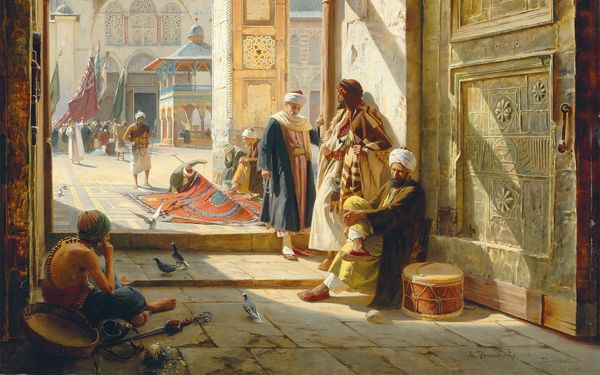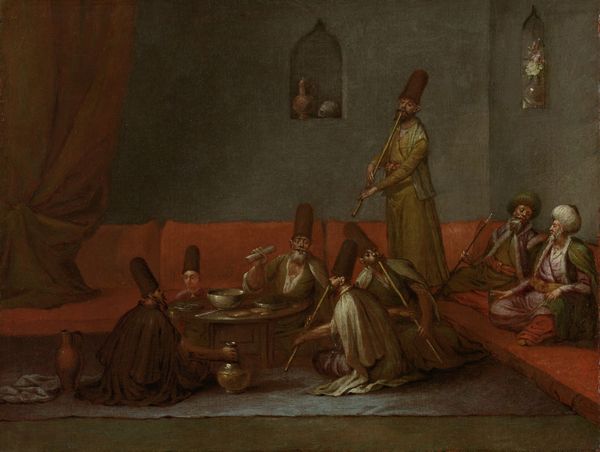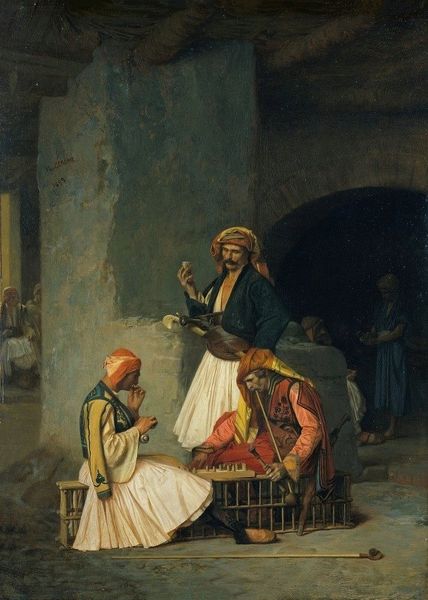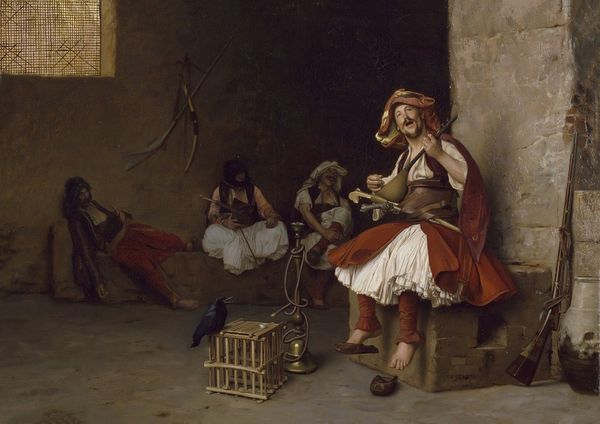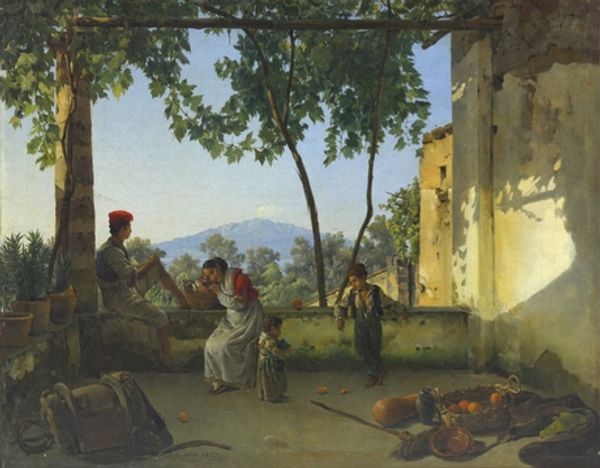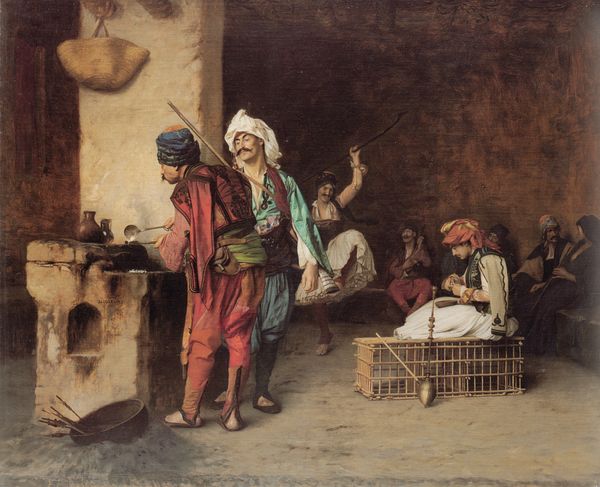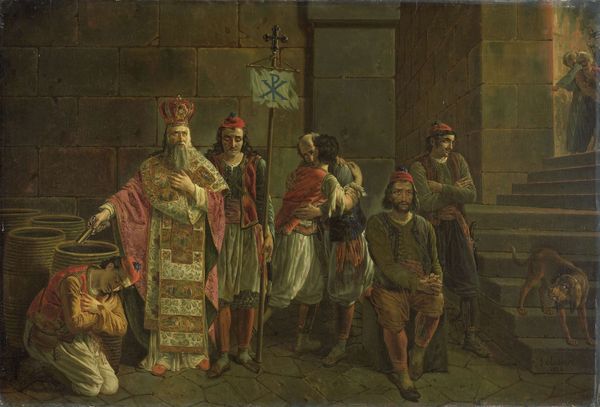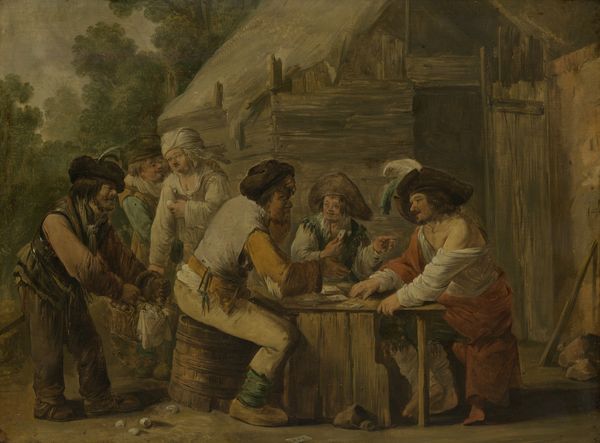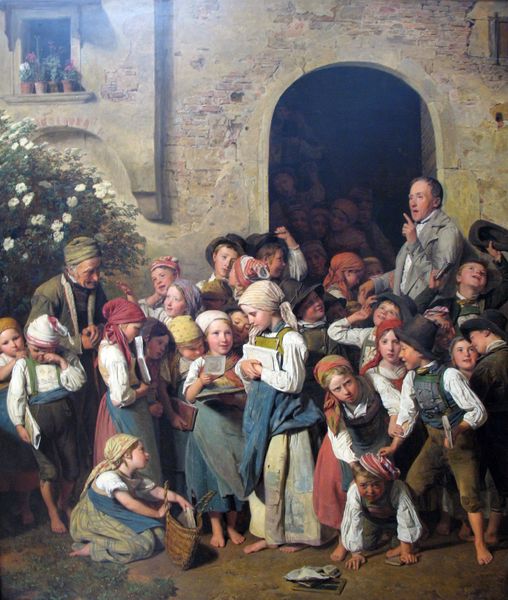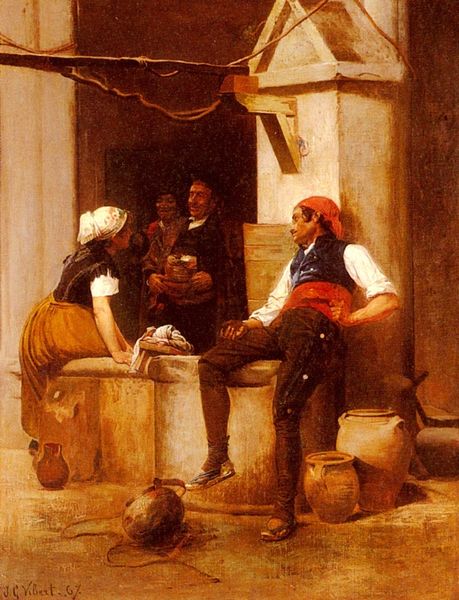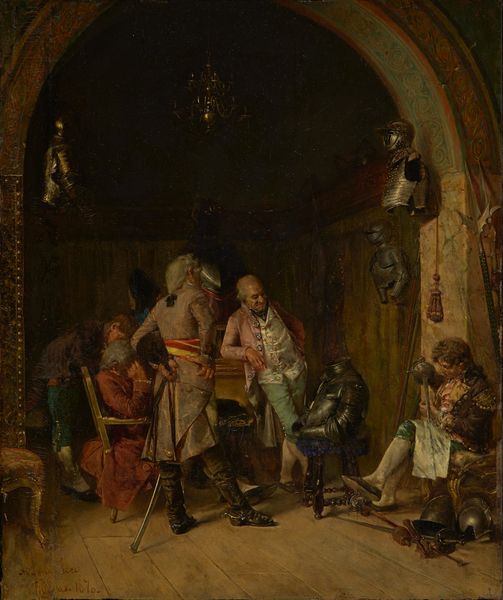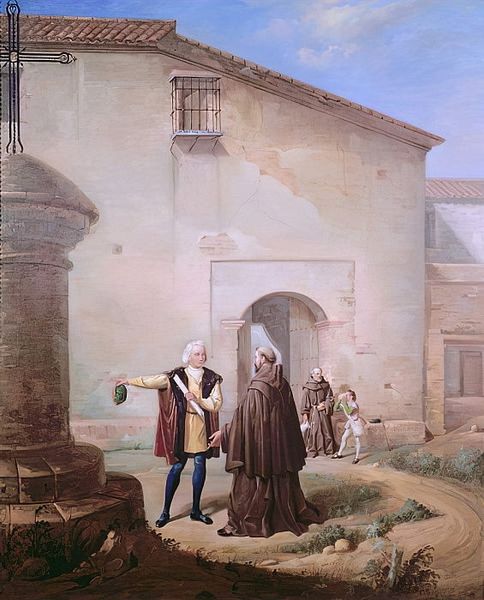
A party of chess players outside a Turkish coffeehouse and barbershop 1845
0:00
0:00
canvas
#
possibly oil pastel
#
handmade artwork painting
#
oil painting
#
canvas
#
coffee painting
#
underpainting
#
painting painterly
#
watercolour bleed
#
watercolour illustration
#
watercolor
#
warm toned green
Dimensions: 91.5 cm (height) x 123.5 cm (width) (Netto), 116.7 cm (height) x 147.9 cm (width) x 11.3 cm (depth) (Brutto)
Curator: This painting is entitled "A party of chess players outside a Turkish coffeehouse and barbershop", created in 1845 by Martinus Rørbye. It resides here at the SMK, the Statens Museum for Kunst. Editor: Immediately, I'm struck by its pervasive warmth, not just in color, but in its implicit narrative. The way the composition is structured draws me right into the leisurely atmosphere. The precise rendering of details is wonderful, although it almost has the artificial quality of a theatrical backdrop. Curator: Absolutely. Look at how Rørbye employs light and shadow, creating depth and a staged interplay between the figures in the foreground, engrossed in chess, and those in the background. Semiotically, the pipes act as formal echoes, tying these visual groups together. Editor: And how the artist handles texture—the rough weave of the striped rug beneath the chess players versus the smoother rendered walls and the various textiles they wear— speaks to the social fabric, so to speak, of daily life. One could delve into the provenance of these goods: from where did they derive and how would such objects been regarded within different communities and marketplaces. Curator: Certainly, one may speculate on their access to materials and resources of the day. We must be careful about projecting contemporary values back, however. Think instead about the artist's structural framing, his geometric sensibility; it draws a distinction between the external world and the private social exchange. Notice that arched doorway and window? These give the effect of framing, similar to looking at a theatre play. Editor: These frames feel significant considering the labor seemingly suspended here: chess and coffeehouses represent distinct types of work – that of intellectual activity versus perhaps a more proletarian version found within manual labor in a barbershop. In this particular space, Rørbye visualizes the liminal place for each. Curator: I appreciate your take. And that liminal space offers an interpretive key for examining what the scene represents beyond genre painting – how he resolves compositional tensions through echoing colors and gestures gives us access to what it might have meant to him. Editor: Ultimately, observing the construction, materials, and content is key here; Rørbye reminds me that sometimes leisure and labour exist on parallel planes. It feels imperative for us to view their coexistence when we study works like these.
Comments
No comments
Be the first to comment and join the conversation on the ultimate creative platform.
